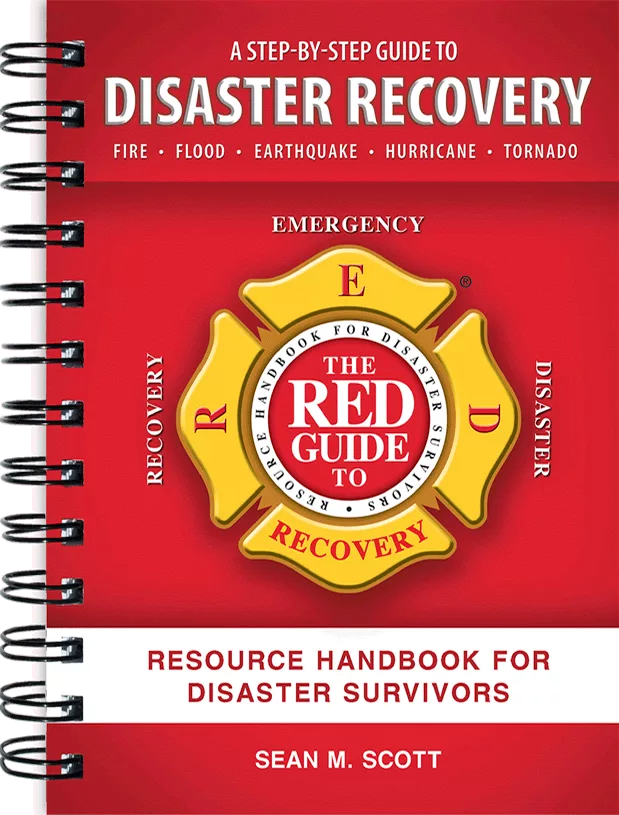Want to Become a Restoration Industry Thought Leader? Read This First

Photo credit: MF3d / E+ via Getty Images
We find thought leaders in every industry — health care, technology, professional cleaning, facility management and, of course, the restoration and remodeling industry. But have you ever wondered how these people became “thought leaders”?
Thought leaders are not born; they evolve. Their evolution is not necessarily a complicated process, but it typically takes time and, something else – passion. While this has become an overused word, in most cases, those recognized as thought leaders in their respective industries do feel passionate about those industries, their passion becomes key to who they are as a person.
But before we explore thought leaders and thought leadership, let us make sure we are all on the same page as to what a thought leader is. While there is no one definition accepted by all, a solid working definition is the following:
A thought leader is an individual or a company (yes, companies are often thought leaders) specializing in a field whose authority is honored and respected and whose comments, thoughts and beliefs are sought after by others.
Here is something else we should know. Just as thought leaders themselves evolve, the term “thought leader” has evolved.
Coined more than a century ago, the term seems to have gotten lost for decades from when it was coined. The Oxford English Dictionary dates the term back to 1887. It was used to describe Ward Beecher, an author and preacher involved in the abolitionist movement in the U.S. He was called “one of the great thought leaders in America [italics mine].”
But as already mentioned, the term was rarely, if ever, heard again until Silicon Valley emerged in the 1970s. One of the first thought leaders in Silicon Valley was Bill Hewlett with Hewlett-Packard. One day Hewlett got a call from a young student looking for parts for a frequency counter, which measures signals and frequencies. That young student was Steve Jobs. Hewlett, impressed with the young man, gave him a summer job, and 20 years later, Jobs became the most admired thought leader in the country.
Why Are Thought Leaders Important?
Thought leaders typically fall into two key categories: They are educators or change makers, or both.
As educators, they help us grow as people and organizations. These thought leaders typically share one or two of their specialties with others. For instance, once he got out of jail, the real Wolf of Wall Street, Jordon Belfort, remade himself into a sales expert. In time, he became a recognized thought leader with respect to sales.
Beginning his presentations with the famous line, “Sell me this pen,” salespeople in all industries around the globe attended his presentations. Belfort also shows us that thought leaders who are educators do not necessarily focus on just one industry or sector. They can impact many.
As change makers, they often believe ardently in a concept or idea, urging others to listen to them, heed what they have to say, make changes in their personal or business lives, and spur innovation. A perfect example is one of our clients. He started out advocating for green cleaning and environmentally preferable cleaning solutions more than 20 years ago. Ignored for years, few people attended his presentations at cleaning trade shows.
However, he persisted. Soon, one industry sector after another — education, health care, facility management, sports and others — listened and heeded what he had to say. While he can’t be solely credited for the turn of events, innovation in the professional cleaning industry, spurred on by this thought leader, has made the professional cleaning industry a leader in green initiatives.
But before we move on, there is one more reason why thought leaders are so important, and that’s because they help people and organizations make money. According to research by public relations firm Edelman, 64% of business-to-business (B2B) organizations evaluate their organization based on its thought leadership, and nearly half of these B2B organizations award business to organizations based on their status as thought leaders.
Further, the international advertising firm Ogilvy reports that when key individuals in an organization become recognized as thought leaders, it plays a “crucial role in the fortunes of those organizations.”
How to Evolve Into a Thought Leader
Just as there is no set definition for what a thought leader is, there are no set ways someone or an organization becomes a thought leader. However, most evolve through the following journey:
Time.
Usually, people and organizations that become thought leaders have been in their field for many years before reaching the stature of thought leaders.
We mentioned Bill Hewlett earlier. He and his partner, Dave Packard, founders of Hewlett-Packard (H.P.), had limited success making calculators and printing materials in the 1960s. However, in the 1980s, they introduced inkjet and laser printers, which was their big break. Soon, H.P. made the list of the Fortune 500, and that’s when the company and its owners became thought leaders throughout Silicon Valley.
Content.
Not all of us can start a company like H.P. and ride its coattails to thought leadership prominence. However, we may have more expertise in specific fields than most others. We believe in our ideas and concepts and think they can help others. If this is the case, we need to make ourselves known. Typically, this involves content. Publishing articles in trade publications, getting quoted in other publications, writing blogs, authoring books, delivering presentations and today with new technologies, presenting podcasts and videos.
Peter Attia earned his M.D. from Stanford University and practiced at Johns Hopkins Hospital in general surgery for more than five years. He also worked at the National Institutes of Health and the National Cancer Institute. But it was his podcasts on the science of longevity, health, the obesity crisis, aging and fasting that made him one of the leading thought leaders in this country and around the world.
Help others.
Few industry leaders succeed if they do not help others. Peter Attia’s total focus is on helping others. Jordon Belfort is credited for dramatically assisting many salespeople and entire sales forces. In virtually all cases, thought leaders help others and organizations become more prosperous, healthier, better managed and successful.
Perseverance.
Remember our green cleaning expert mentioned earlier. We said many of his presentations were met with tiny audiences. We should add that not only were his audiences small, but most were also lawyers.
They attended to ensure he never mentioned anything critical of one of their clients’ products. But he persevered. His promotion of green cleaning helped change an entire industry and has made the use of green cleaning products and methods modus operandi in facilities worldwide.
Branding.
Using the different content methods mentioned earlier are essentially marketing techniques. They are ways thought leaders get themselves and their organizations known. However, they must go one step further — they must brand themselves. The American Marketing Association defines branding as follows: A brand is a name, term, design, symbol or any other feature that identifies one seller’s good or service as a distinct form.
A brand is an image; a feeling people have about a product, or, in this case, a thought leader. There are many podcasts from health experts and thousands of sales experts traveling around the world giving presentations and writing books on sales techniques. However, those that become true thought leaders are the ones that consumers and end customers think of first when it comes to these and most all specialties. They’ve created an image of themselves that has made them recognizable and sought after.
Is it now your turn? Many people who rise to the top have a choice: Retire and disappear into the woodwork or take the stage and share their expertise with others. If a business or organization, the stats mentioned earlier indicate that thought leadership is not only good for sales, but also what distinguishes your organization from your competitors.
Looking for a reprint of this article?
From high-res PDFs to custom plaques, order your copy today!









